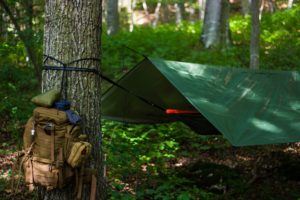On the trail, the most important thing is to remain upright. That begins at the bottom of your legs with the right footwear. With such a plethora of choices in hiking boots and shoes, it is no wonder that the question often gets asked, “Do you need hiking boots for all trails?”
Do you need hiking boots for all trails? There is no need for hiking boots on all trails. The trail rating is your best guide to the footwear that is appropriate.
- Easy – intermediate trail ratings call for trail shoes or trail runners.
- Difficult – extreme trails need good hiking boots.
Below will help you make the decision on which hiking boot is most appropriate. It will help you understand the different types and styles of outdoor footwear. And help you consider which is the best option for your goals and plans.
What to Consider as you Shop

- You should also consider your objectives on the trail – Are you day hiking or trekking cross country? Are you interested in making miles or going leisurely to enjoy the scenery?
- Consider the load you will be carrying – If you are day hiking with nothing but a light rucksack or hydration pack you have different requirements for your feet than someone who is hefting an 80 lbs. wilderness backpack on a three-day trek.
- Don’t overlook your personal preference – Some people don’t like heavy hiking boots, even when the conditions are extreme. Your experiences and your personal preferences should figure just as much into the choice of boots as the terrain and your load.
Types of Hiking Boots and Shoes
The variety of different types and styles of outdoor footwear can be overwhelming. A stroll through the footwear department of any sporting goods store is an eye-opening experience.
Besides hiking boots, your hiking apparel is also extremely important to consider. Learn more about the best hiking apparel for each season here.
Having a bit of knowledge about the different styles of trail boots and shoes will at least give you a place to start as you navigate through the confusion.
Hiking Boots
Hiking boots generally come in two classifications. The tag on the shelf or the box may not specifically state to which classification a boot belongs, but you shouldn’t have much trouble differentiating the two. Hiking boots generally classify as:
- Heavy Hiking Boots – These boots are usually heavier in weight than any of the other hiking boots or shoes you will find. This is due to heavier material, a stiffer midsole, and taller tops for ankle support. If you plan on carrying a backpack over 40 lbs. or trekking through extreme or difficult terrain, your feet and ankles will appreciate a good pair of heavy hiking boots.
- Light Hiking Boots – These are the boots that most hikers think of when hiking boots is in the discussion. This classification of boots is lighter than their heavier big brothers, but still have high tops to help support the ankle. The midsole may be a bit more relaxed and the boot itself may incorporate lighter, more breathable materials for comfort.
Trail Shoes
Trail shoes are the intermediary between trail runners and hiking boots. In general, they are characterized by:
- A low-cut design more like a sneaker than a boot
- A good tread pattern but not a heavy thick sole like a hiking boot
- A combination of manmade materials that breathe and offer good ventilation
- A more flexible midsole
Trail Runners
If speed is your objective and you don’t expect to be carrying a pack or any other kind of load, trail runners may be the best option for you. Trail runners are like the track shoe for the serious speed hiker. They combine the lightweight and flexibility of a sneaker with better construction and a more traction oriented sole design.
How to Choose What You Need

Aside from your personal preferences for styles, design, and appearance, the types of trails you will be on and the loads you will be carrying are the determining factor in which kind of hiking boot or shoe you need. That requires you to have some understanding of the not so official trail rating system used by most hiking and outdoor organizations.
Understanding Trail Ratings
Every hiking and outdoor organization rate trails a bit differently. Before you start on any hike, you should do some homework about the rating system used locally or by the guide you are following. Overall, most organizations rate trails according to these basic criteria.
Easy
These trails are suitable for almost anyone. Trails rated as easy may even be accessed by the handicapped. You will generally find excellent trail conditions that are improved and that have little elevation gain or loss. Anyone in reasonably good shape should be able to manage an Easy Trail.
Moderate
You should be in reasonably good health and have some stamina to be comfortable on a trail rated as moderate. For the most part, these trails are maintained and marked and may get their moderate rating from being a bit longer in the distance than an easy trail. You may experience some moderate elevation gain and loss over the length of the trail as well.
Challenging
Before you start out on a challenging trail, you may want to put In a few miles of training to get your physical condition a bit more tuned. These trails are typically in good condition but are usually longer and have more significant elevation changes than a moderate trail.
Difficult
Get yourself in good physical condition before you start a trek on a trail deemed difficult. In most parks and outdoor areas, the trails are in reasonably good condition. However, increased distance and some significant and rapid elevation changes may be found along the way.
Very Difficult
These trails are not for the faint of heart or the couch potato type. You should be in excellent physical shape before venturing out on a Very Difficult trail. Many of these trails are not well kept and may not be well marked. Usually, on the long side, you may find that you spend more time on the vertical ground than you do on flat ground.
Extreme
If you are thinking of attempting a trip on an extreme trail, you should give extra thought to your physical condition and your skills. Some of these trails require technical skills that most hikers don’t have and may even require special equipment to ascend and descend sharp, steep slopes. There may not even be a marked or visible trail to follow and you may find yourself at remarkably high altitudes.
The Trail and the Load Determine the Boot

Two things should be at the heart of your decision on what style of hiking boot or shoe you need. Both influence the requirements of keeping you safe and upright, as well as protecting your feet and ankles. Consider the following.
- Easy to Moderate trail with a heavy load – If you are planning on a multi-day trip where you must carry everything you need on your back, the easy to challenging trail that you would normally tackle wearing a hiking shoe, may now require more support from light or even heavy hiking boot. The added weight puts more strain on your feet and ankles.
- Easy to Difficult trail for an experienced trail runner – With no-load and more interested in the run than the hike, trail runners can navigate even some difficult terrain with the support of a pair of trail runners or trail shoes. Your experience here is the key, as well as your physical condition.
- A flat trail in hot conditions with a heavy load – Some weather conditions can make a difference in your footwear as much as the trail conditions. If you are in an arid climate on a relatively flat trail, you may get by with a lightweight boot or even a good hiking shoe. This can save weight and keep you more comfortable in the long run.
The takeaway here is that you need to consider a lot of different factors and how they work together to influence your decision on footwear for your hike.
When the Boot Hits the Trail
As you begin to make your decisions on what footwear is appropriate for your outdoor adventure, keep these criteria and factors in mind. The boots or shoes you choose can make or break a hike. The most expensive boots in the wrong conditions can be worse than not having boots at all. After all, there have been several people who have completed the Appalachian Trail barefoot! Maybe you should give that a thought?






